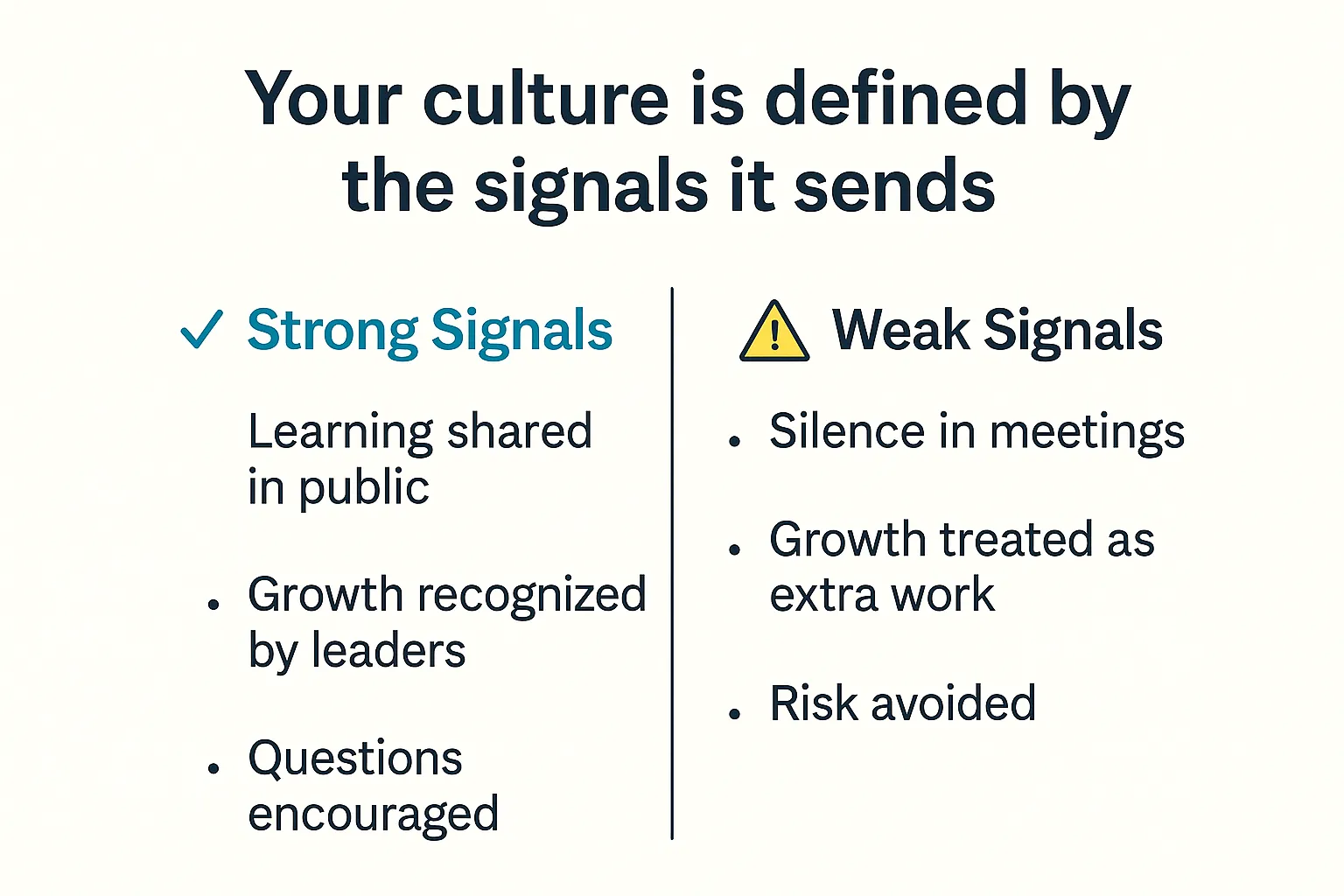“Learning culture” gets mentioned in nearly every L&D strategy conversation, but what does it really mean?
On a base level, one could say “learning culture” is a set of values paired with a library of resources. But there is much more to it than that. It’s a complex system of behaviors, norms, and signals that tell people: in this workplace, learning matters.
A real learning culture isn’t built on inspirational posters or lofty mission statements. It’s built on daily habits, team conversations, leaders who model curiosity, and employees believing – not just being told – that learning is relevant, safe, and worthwhile.
Culture Is What People Do When No One’s Watching
In her book The Fearless Organization, Amy Edmondson notes that true learning cultures require psychological safety – an environment where employees feel safe sharing ideas, asking questions, and even making mistakes. When that foundation is missing, people stay silent not because they lack ideas, but because they fear judgment or repercussion. Psychological safety is the invisible infrastructure of a learning culture. Without it, even the best resources or strategies fall flat.
In strong learning cultures, you don’t have to convince people to learn because they’re already doing it. Not because it’s mandated, but because it’s normalized and feels natural. Teams share what they’re reading or trying. Managers carve out time for reflection. Peer learning happens organically.
Here are a few things you’ll see in organizations where learning culture is alive and well:
- Learning happens in public: Teams share what they’re learning, not just what they’re doing.
- Learning is tied to decisions: New knowledge informs planning, strategy, and problem-solving.
- Learning is supported, not just expected: Managers have tools to guide reflection and recognize growth.
- Learning is ongoing: It’s not confined to programs or events. It’s embedded in the rhythm of work.

Signs of a Struggling Culture
In contrast, weak learning cultures are defined by hesitation. Employees keep quiet. They avoid risk. Learning is treated as extra work or something to do “if there’s extra time.” (When was the last time your team had “extra time”?) In these environments, growth feels like a personal burden instead of a shared value.
Often, the issue is more about infrastructure than resistance to personal growth or career development. Most people like to learn, after all. But when organizations fail to prioritize learning opportunities or provide usable, relevant tools, even motivated employees disengage.
How to Make Learning Visible
Leaders set the tone. According to Edmondson, even subtle cues from managers, like interrupting or dismissing questions, can send a clear message that learning is not truly safe. The antidote? Active listening, modeling curiosity, and rewarding learning behaviors, not just outcomes.
Culture doesn’t shift overnight. But it does shift through patterns.
At getAbstract, we work with organizations that want to normalize learning, not just encourage it. That means:
- Giving people access to trusted, expert knowledge they can act on quickly
- Embedding that knowledge into workflows, not just platforms
- Making reflection and dialogue part of the process
- Helping teams see learning as a shared, visible habit
When learning is visible, behavior follows. When it’s supported, people participate. And when leaders model it, culture catches up.
Take a deeper dive in the getAbstract library…
The Fearless Organization by Amy Edmondson
getAbstract delivers Verified Expert Knowledge that cuts through the noise so your decisions are based on insight, not just information.








